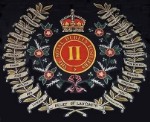Dublin in Ulysses
Here you will find material on the Dublin of James Joyce and Ulysses (1870-1914). Joyce was born 1882 in Rathmines and Rathgar Township, immediately south of the Dublin city limits. Young James lived with his family in Dublin's southern suburbs including Bray, County Wicklow. At age 6 he was enrolled in Clongowes Wood College, an elite Jesuit boarding school in County Kildare. At age 10 he left the school as his father could no longer afford the cost. Joyce then resided with his family in the northern suburb of Drumcondra (incorporated into Dublin in 1901) and several neighborhoods in North Dublin. After completion of his university studies at University College Dublin, he moved to Paris where he stayed for less than a year. He returned to his family and in 1904 left Ireland with Nora Barnacle. They settled first in Pola then Trieste, both in the Austro-Hungarian Empire. While living abroad he visited Ireland twice: August through December, 1909 (with an intervening return to Trieste) and July 17 through September 11, 1912.
In Ulysses, Leopold Bloom was born 1866 in Dublin and lived in the city through Bloomsday. Marion (Molly) Tweedy arrived in Dublin with her father, Major Brian Tweedy, from Gibraltar in the Summer of 1886. Stephen Dedalus, like Joyce, lived in Dublin all his life except when resident at Clongowes Wood College and during a multi-month stay in Paris.
Pages on Major Tweedy's Neighborhood
Revised April, 2023.
O'Connell Bridge and Sackville Street
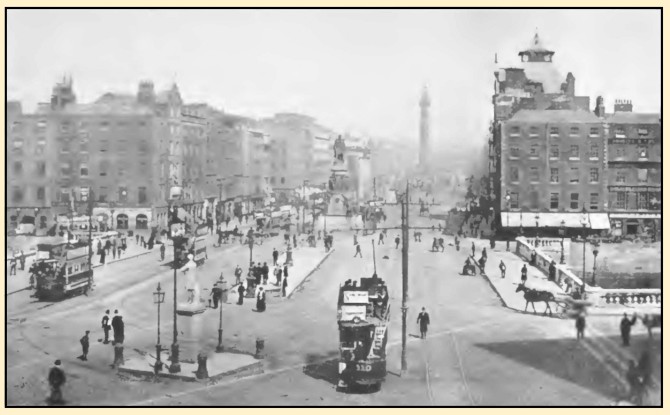
Valentine & Son, Black's Guide to Ireland, 1906
Dublin and Environs of Bloomsday
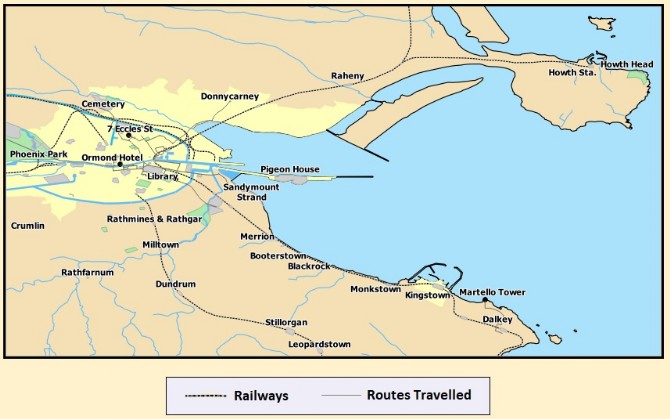
Dublin City of Bloomsday
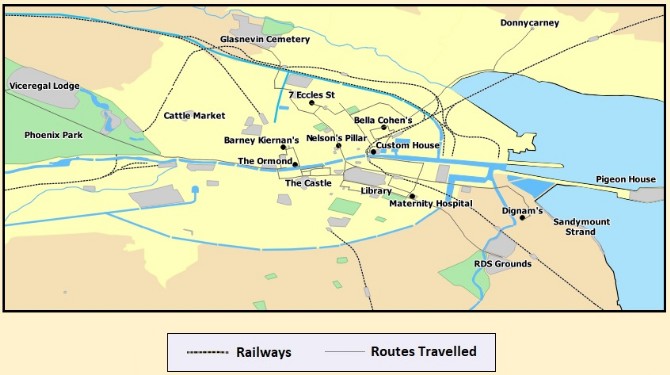
Dublin Today
The above link is to the map viewer of UCD Library.
Loaded in the viewer is a map of Dublin prepared by the Ordnance Survey in 1898 for Thom's Directory. The map is from the second revision of the Ordnance Survey of Ireland. That revision began in 1888 and was completed in 1913. The viewer will open in a new browser window.
This is a large scale, detailed map digitized by University College Dublin. Though the paper map is in the public domain, the digital map is property of UCD; however, it may be used freely for non-commercial purposes. "To use for commercial purposes, please contact the UCD Digital Library. See: http://digital.ucd.ie/terms/" (this page will open in a new browser window).
The URL for the map's webpage is https://digital.ucd.ie/view/ucdlib:33009. Click on the icon for the home page of the UCD library which will open in a new browser window.
The above link is to the map viewer of Princeton University Library.
From the Memorial Atlas of Ireland (Philadelphia: L.J. Richards, 1901). Shows baronies and civil parishes.
Faithful Departed, The Dublin of Ulysses
The above link is to the video player of the Irish Film Institute.
Des Hickey's poetic film that uses Robert French photographs from the National Library's Lawrence Collection. The video player webpage of the Irish Film Institute will open in a new browser window. Faithful Departed, released in 1967, was directed by Kieran Hickey and is narrated by Jack McGowran.
"The film traces Joyce's childhood and adolescence, and his meeting with Nora Barnacle on June 10th, 1904 .... It provides a fine illustration of the Dublin through which Joyce’s fictional Leopold Bloom wandered on June 16th 1904 (the date now celebrated annually as Bloomsday). The music in the film references some of Joyce's favourite songs many of which appear in Ulysses."
n/ Website of the Irish Film Institute.
Click on the icon for the IFI home page which will open in a new browser window.
Download from Major Tweedy's Neighborhood
To download the file click on the document's name. The file will open in a new browser window.
Chapters on contemporary Dublin from Samuel A. Ossory Fitzpatrick's DUBLIN A Historical and Topographical Account of the City (London: Methuen, 1907). 2.7 mb pdf file.

Chapters on contemporary Dublin from M.J.B. Baddeley,Thorough Guide to Ireland, Part I (London: Nelson, 1909). 2.6 mb pdf file.

Last three sections of the above book which also covers the city's environs: History and Archaeology, Education and Research, Industries and Commerce." By the British Association (Dublin: Ponsonby & Gibbs, 1908). The book contains numerous illustrations, photographs and drawings. The chapters are in a 12.7 MB pdf.
The omitted sections are scientific: Geology, Meteorology, Botany, and Zoology. Click on the icon to the right to download the complete book from the Internet Archive.
Dublin and Environs, Ordnance Survey of Ireland
High-resolution images of Ordnance Survey of Ireland 6-Inch Dublin maps, early 1900s revisions. These maps were published in 1910 and 1912. Some of these images are from reissues, such as that done in 1989 by the defunct Phoenix Publishing Co. Some files are very large and will take some time to open fully in your browser. Click on the icon to the right for the index map which will open in a popup window.
Bartholomew's map of Dublin that shows railway stations, hotels, theatres, public places, etc. From Baddeley's Thorough Guide to Ireland, 1909. 1.4 mb pdf file.
Download From Other Websites
All these documents are in .pdf files and are fully readable. To download the file click on the document name or its website icon. The file will open from the other website in a new browser window.
Published by J.M Dent in 1907, the first third of the book is a history of the city, the balance a contemporary description. Includes the more popular legends and numerous illustrations. From the Internet Archive. You may download the entire book.
The Evening Telegraph was a sister publication of The Freeman's Journal. Both were owned by the Freeman's Journal, Ltd. a corporation controlled by Thomas Sexton. The Freeman's was a morning newspaper, established 1763, with offices at 4-8 Prince's Street. The Telegraph was
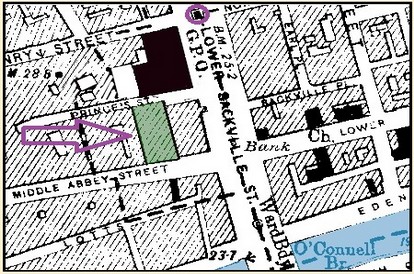
an evening newspaper, established 1871, with offices at 83 Abbey Street Middle. Both were in the same building that ran between the two streets. (In Ulysses, Bloom enters the building from Prince's Street and exits on Abbey Street Middle.) The corporation's registered office was at 211 Strand, London. This document is a 1966 reconstruction by Split Pea Press, from Ian Gunn's website, Joyce Tools.
n/ Willing's Press Guide (London: Willing, 1907).
Christopher T. M'Cready (Dublin: Hodges, Figgis, 1892). From the Internet Archive. You may download the entire book.
History of Joyce's alma mater from its founding in 1883 as Catholic University, Dublin through 1909. Fathers of the Society of Jesus, A Page of Irish History (Dublin: Talbot, 1930). Includes material on some of its notable graduates. From the Internet Archive. You may download the entire book.
Weston St. John Joyce (Dublin: Gill, 1921). Descriptions and histories of Dublin's suburban and exurban districts. Includes Sandycove Point, Clongowes Wood, Bray, Howth, etc. Numerous illustrations, mostly photographs, such as the one below (Poolbeg Lighthouse in 1903). From the Internet Archive. You may download the entire book.
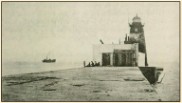
E. MacDowel Cosgrave and Leonard R. Strangways (Dublin: Sealy, Bryers & Walker, 1908). The book's first part is a description and history of the city with a two-day, walking tour itinerary (28 pages). The second part is an encyclopedia of Dublin places, buildings, institutions, and personages (229 pages). The book is profusely illustrated with photographs and drawings. From the Internet Archive. You may download the entire book.
James Joyce (London: Richards, 1914). Joyce's collection of short stories all set in Dublin. From the Internet Archive. You may download the entire book.
Links to Other Websites
Note: The webpages will open in new windows.
Click on the link to go to that page of the website. Click on the icon to go to the website's home page.
Online exhibition of the National Archives of Ireland. Brief descriptions, with illustrations, on aspects of Dublin life including Poverty and Health, the Suburbs, Politics, Religion, Social Life, and Sport. Note that all "images are copyright to their repositories or custodians, and may not be reproduced without permission from them."
Online exhibition of the National Library of Ireland preserved by Google Arts & Culture. It consists of photographs that "show us how the city looked to writer James Joyce." Note that all the digital images are property of the National Library of Ireland. See the library's terms of use if you wish to use any of these images in a website, print publication, or ebook.
Many images of Dublin and environs, c. 1900. From the digital collection of the Library of Congress. The LOC has imposed no restrictions on the use of these images.
Article by Ian Gunn published in the web journal James Joyce Online Notes.
Links to various resources for Joyce, Dublin, and "The Dead." Part of a UCD Humanities Institute podcast and multimedia project, Joyce's Dublin; An exploration of 'The Dead.' Note: This website has not been maintained and many of the links are broken.
